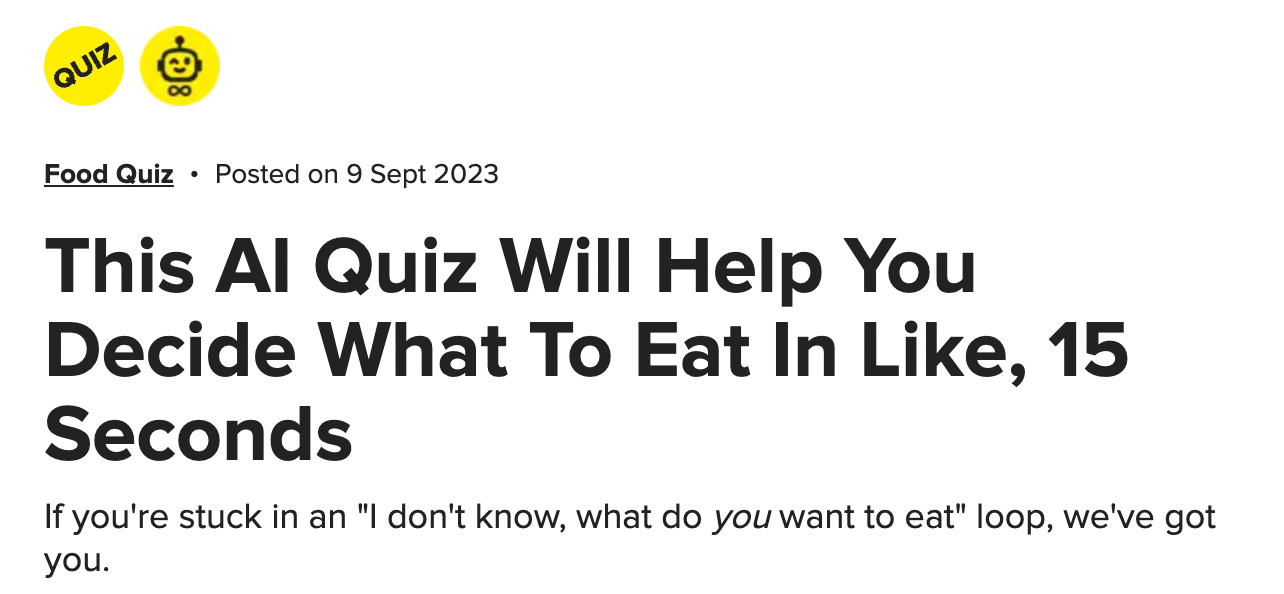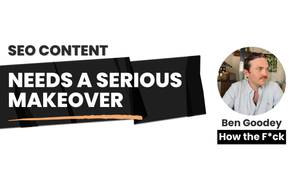Most SEO content in 2024 is not packaged in a way that users are willing to consume.
Our approach to creating content for SEO needs to adapt.
Most SEO content in 2024 is not packaged in a way that users are willing to consume.
Long-form, 2,500-word-plus content has long been an effective way to rank in Google.
But, it frankly sucks for a busy, bored, attention-span-lacking (aka human) reader.
Regardless of who is to blame for it (SEOs or the incentives encouraged by the Google algorithm) it makes the Google experience a complete snoozefest.
No wonder that for a growing number of queries Google builds their own click-eating experiences that better serve their audience’s true needs:
It’s also no wonder that search users are starting to flock to social media sites like TikTok, Instagram and ChatGPT to source answers that are delivered in much more desirable packaging.
I, for one, am still adding "Reddit" after many of my searches to find an array of takes on my problem.
It’s time to face a harsh truth.
Most content on Google:
- Lacks creativity
- Lacks expertise
- Lacks credibility
And even when it does have these things, it’s packaged in a way that’s consumers find difficult to navigate, uninspiring and not worthy of their time.
Apparently the average blog read time is 52 seconds, why aren’t we freaking out about that when a 2,000 word blog clearly takes 6-10 minutes to read?
One of the greatest causes of this challenge is that content folk are forced through a process which makes little sense to the end user:
- Step 0: Here’s the blog post template
- Step 1: What keyword should we go after?
- Step 2: Okay, let’s write about X then.
Starting with a pre-established UX (aka the blog post template that came with your website package) is seriously limiting to how user-centric we can be.
Yet, we never question being forced to create content in a format that not even we enjoy.
The listicle is about as close as we get to formatting content on a blog in a way readers actually enjoy (yes, I’m not even joking, Buzzfeed were clearly onto something there).

With most blog post templates, you can’t even add colorful CTA buttons, accordion boxes, and table of contents that would help a reader find the information they *actually* might find useful.
My content team always creates content for clients that's skimmable, digestible, logically formatted. Often throwing in downloadable factsheets, tables, slideshows, and interactive elements. And when we are able to influence more of the design, we very much do get involved.
With the rise of no-code website builders like Webflow—a tool I suggest every content marketer and SEO invests time to learn—we’ve actually never been so empowered to package content in unique and interesting ways.
While, yes, there is merit to the argument that it’s still too costly to do so in both time and money. I don’t think that has to be the case.
And I'll tell you why after this short advertisement.
I don't think creative, engaging content formats have to be too costly and resource intensive.
Most content falls into familiar patterns:
- Best [X] Software
- Checklist for [Y]
- What is [Z]?
- Editorials and stories
You only need one custom design experience per piece, as the most desirable user journey is also likely to follow a pattern. That experience can still be optimized for search algorithms.
There are also a host of no-code scrollytelling tools, survey-makers, quiz makers, slideshow makers, calculator builders, etc. out there now you can leverage.
Circa 2012, my favorite website was StumbleUpon.
In StumbleUpon, you could choose the subjects you were interested in and click a “stumble” button to be taken to a random website.
I’d sit there for hours clicking, each time you'd land on a unique, creative, wonderful content experience. Or an interesting news story or article—written by journalists or enthusiasts, not marketers on the content mill.
A Google filled with sites like that would be a utopia—sadly one Google has failed to create.
But I think there’s a lot we can learn from the types of sites we used to see in StumbleUpon.
The vast majority were truly created for us the reader and not to game search.
I haven’t got all the answers to this conundrum, yet.
But it’s something I’ve thought about for a while and I’m exploring more and more with clients. We're close to having an offer ready for it.
Right now, most brands compete on “writing quality”—spending their budget on top writers to create truly useful content, something I encourage.
But once brands have nailed that layer, I’d encourage them to begin competing for audience attention by investing in packaging and design quality.
The good news:
- This is the kind of content that gets shared
- This is the kind of content that builds your brand
- This is the kind of content people actually love
These are ever more important for good SEO in 2024 and beyond.
More good news:
Some brands are already doing this. Quietly and carefully.
Here are 8 examples of content experiences to admire closely.
3 ways you can work with me:
Sponsor the community
Over the past two years I've been lucky enough to be sponsored by Ahrefs, Semrush, DoFollow, Search Intelligence, thruuu and more awesome brands in the industry. I do sponsored newsletters & social posts and they get HUGE results.
Book a power hour
Want to give your SEO strategy a once over from an experienced eye? Book an hour with me here.
Done for you growth
Most SEO programs get traffic, but no revenue results. They over-focus on hacks and vanity metrics—two things I'm not interested in.
I'm not just an SEO, I'm an ex-head of marketing who know veeery well what it's like to have a no-nonsense CEO breathing down your neck.
That's why my agency (announcing soon 👀) builds SEO strategies that are "pathways to revenue"—designed intentionally to get you to results that matter.
My fully done for you services includes world-class:
- SEO consultancy
- Content production
- Link acquisition strategy
Want in? Book a 20-minute chat here.
—Benny


